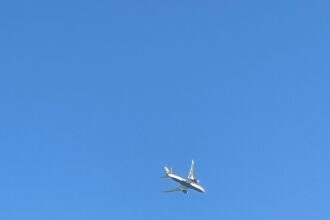A flight from Washington to London Heathrow diverted to Boston after suspected bird strike causing engine issue.
The British Airways flight BA216 departed Washington IAD Airport Saturday, April 26 2025 to London Heathrow, England.
The flight, operated by a Boeing 777-300ER (registration G-STBD), climbed to 35,000 feet when the crew reported engine vibration and smoke in the cabin.
Pilots decided to divert to nearby airport, the flight was vectored to Boston Logan International Airport where the aircraft landed a bit more than one hour after departure.

British Airways Flight 216 landed at Boston Logan International Airport at about 7:30 p.m. Eastern Time “after the crew reported a possible bird strike and fumes in the cabin,” the Federal Aviation Administration said in a statement.
A spokesperson for British Airways said the flight was diverted to Boston “as a precaution following a suspected bird strike,” adding that engineers were inspecting the aircraft.
Bird strikes are dangerous for planes mainly because of the force and damage involved when a bird hits an aircraft at high speeds. Here’s why it’s a big deal:
- Engine Damage: Birds can get sucked into jet engines, damaging or even shutting them down. In some cases, both engines can fail, like what happened in the famous “Miracle on the Hudson” landing.
- Windshield Cracks: A bird can crack or even break a cockpit windshield, which can hurt the pilots or mess up their visibility and focus.
- Structural Damage: Birds hitting the wings, tail, or body of the plane can cause dents, holes, or even serious structural problems.
- Loss of Control: If critical parts like the rudder, ailerons, or flaps get hit, the pilot could lose some control over the plane.
Even though planes are designed to handle small bird strikes, large birds or flocks of birds can still pose a serious threat.










